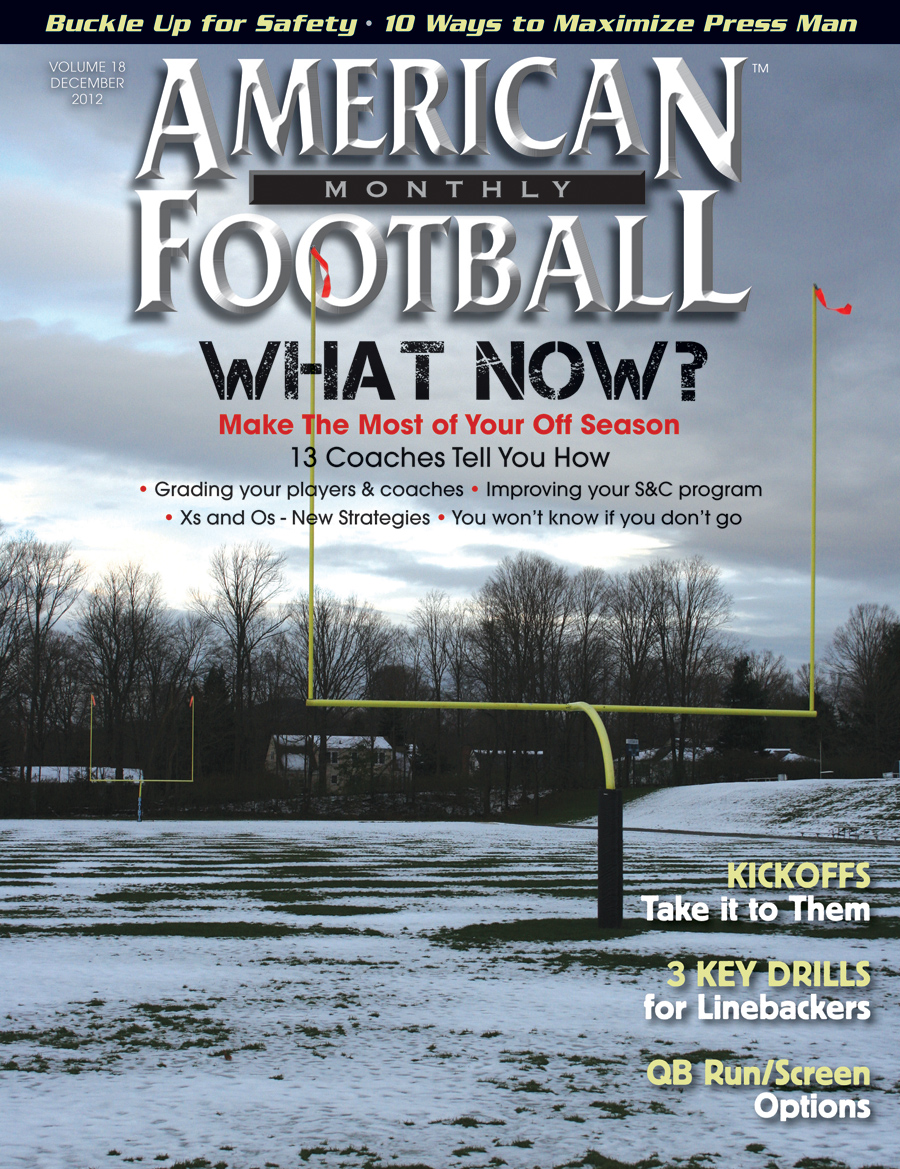Article CategoriesAFM Magazine
|
Secure the Future by Playing it Safeby: Bryon HamiltonHead Coach, Foothill High School, Palo Cedro (CA) © More from this issue By the time you read this article, your 2012 football season will most likely be over. I hope that it was a success for you and your team. Some of you are enjoying the holiday season with the satisfaction of winning a championship while others are already charting a course of action that will result in more success in 2013. Regardless of how the 2012 season finished, the winter months will provide all of us the opportunity for some much needed rest and a time to reflect on areas that brought success and those in which we need to improve. As we reflect on the 2012 season, it would be rare to find any team that was not affected in some way by injury. Some teams may have been lucky enough to avoid the crucial injuries that result in the loss of games and championships while others are left ....The full article can only be seen by subscribers.
|
|
|||||||
| HOME |
MAGAZINE |
SUBSCRIBE | ONLINE COLUMNISTS | COACHING VIDEOS |
Copyright 2025, AmericanFootballMonthly.com
All Rights Reserved





